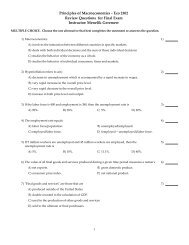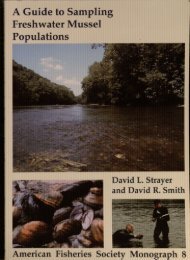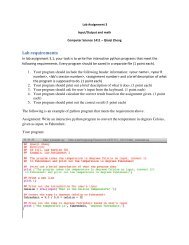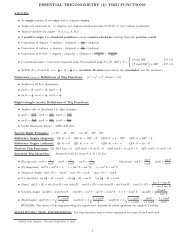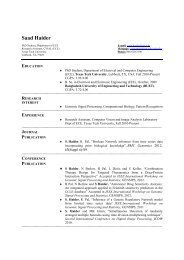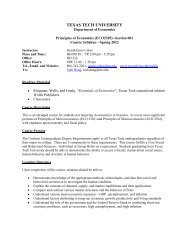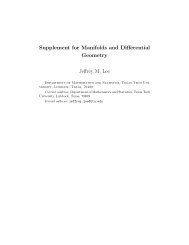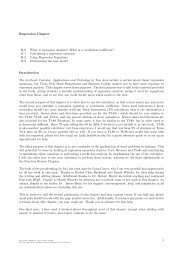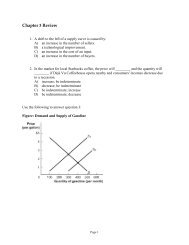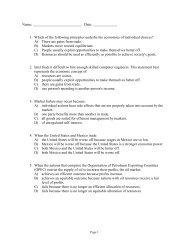Download - MyWeb - Texas Tech University
Download - MyWeb - Texas Tech University
Download - MyWeb - Texas Tech University
Create successful ePaper yourself
Turn your PDF publications into a flip-book with our unique Google optimized e-Paper software.
Results of the 2012 Excavations at Kaxil Uinic Ruins<br />
KU-1-F) was opened on the southern end of<br />
Subop KU-1-C.<br />
Humus Layer<br />
The humus layer (10YR3/2, dark grayish<br />
brown) was designated Lot KU-1-C-1. Many<br />
roots and rootlets were present in this lot,<br />
including three larger roots approximately<br />
10 cm in diameter. The ceramic assemblage<br />
found in this lot was mixed with types ranging<br />
from the Middle Preclassic to the Terminal<br />
Classic. This was also the case in the extension<br />
designated KU-1-F. Two pieces of speleothems<br />
or travertine were found in Lot KU-1-F (Figure<br />
5.9). This is a rock that is formed in caves and<br />
there are no caves known in close proximity to<br />
the site.<br />
A large bifacial tool measuring about 16 cm in<br />
length was found in this the topsoil of KU-1-F<br />
as were several more fragments of speleothems/<br />
travertine.<br />
Figure 5.8.<br />
Photograph of Subop KU-1-H facing<br />
north, with the wall (Lot KU-1-H-3)<br />
visible at the north end of the unit.<br />
the mound 1 m to the north of the unit indicate<br />
that the wall is approximately 2 m thick.<br />
Structure 6<br />
Structure 6 is a pyramid structure that is<br />
situated at the southern edge of Kaxil Uinic’s<br />
main courtyard. Structure 6 is oriented 265<br />
degrees east of north and is about 5 m tall. Its<br />
north-south axis is about 16.5 m long, and its<br />
east-west axis is about 23.5 m long. A 2-x-2-m<br />
unit designated Subop KU-1-C was opened<br />
on the north slope of the structure in hopes<br />
of exposing architecture. Based on the large<br />
number of artifacts recovered from the topsoil<br />
of this first subop and the realization that the<br />
unit was too low on the mound to catch intact<br />
architecture, an additional 2-x-2-m unit (Subop<br />
Steps<br />
Lots KU-1-C-2 and KU-1-F-2 were three cutstones<br />
that spanned both subops, forming the<br />
lowest step to the structure’s stairs (Figure 5.10).<br />
The largest and most exposed of the cut-stones<br />
measured 34 cm in width, 57 cm in length,<br />
and 26 cm in height. The size of these stones<br />
possibly suggests an Early Classic or Late<br />
Preclassic construction date. Any additional<br />
steps above this lower level were not preserved<br />
well enough to be detected during excavations.<br />
When it was apparent that the excavators had<br />
exposed construction fill above and south of the<br />
well-preserved step (Lot KU-1-F-2), Lot KU-<br />
1-F-3 was designated. This construction fill<br />
was excavated to collect a ceramic sample to<br />
help in dating the construction of the structure.<br />
The construction fill contained Palmar Orange<br />
polychrome, which dates to the Late Classic<br />
period, suggesting that the final phase of<br />
construction of Structure 6 took place during<br />
this period. Lot KU-1-F-4 was a fairly well<br />
59



